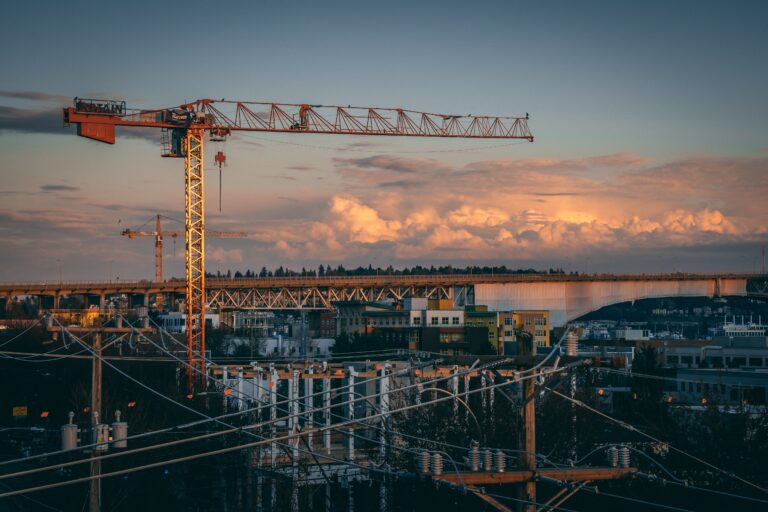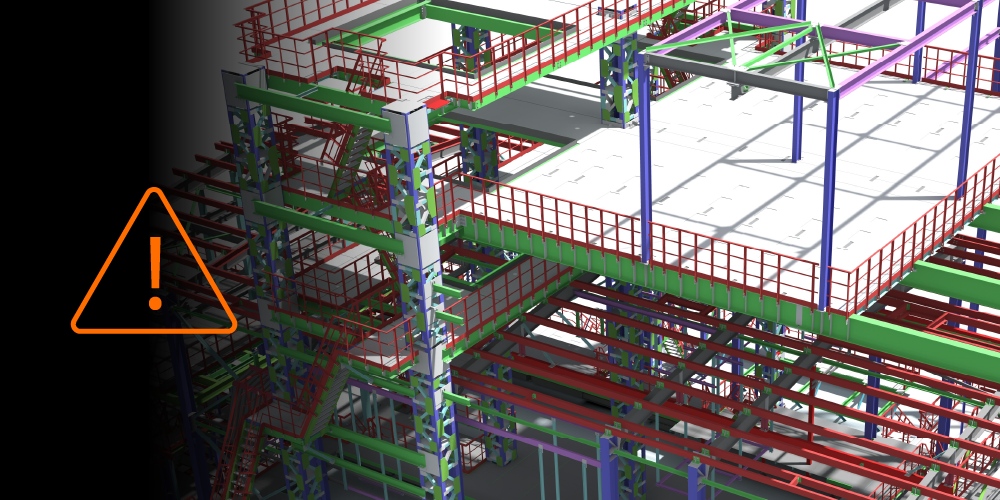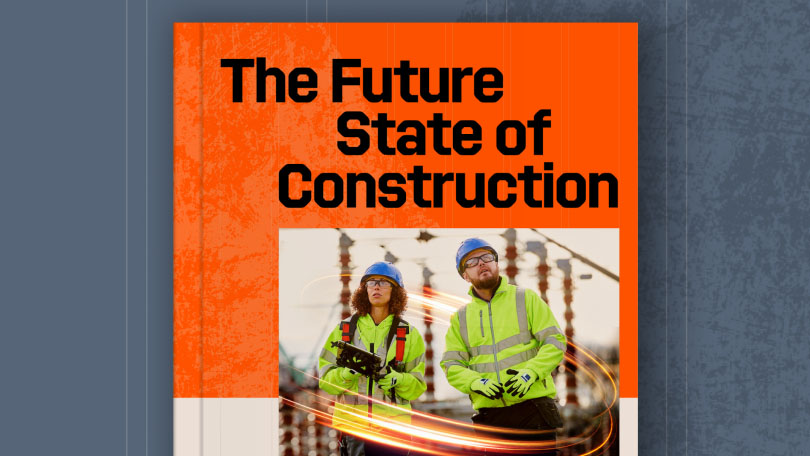Related Articles
— 12 min read
Infrastructure Construction Explained: Key Sectors, Challenges, and Opportunities
Last Updated Aug 28, 2025
Samantha Nemeny
31 articles
Sam—Samantha if she’s feeling particularly academic—has spent a decade in content marketing, with eight years focused on Australia’s construction industry. She has a knack for making complex ideas easy to understand, turning industry jargon into clear, engaging stories. With a background in SEO and marketing, she’s spent the past three years at Procore, helping industry professionals navigate the world of construction with content that’s both insightful and easy to digest.
Last Updated Aug 28, 2025

Infrastructure construction in Australia is entering a new phase—billions of dollars are being funneled into roadways, rail, energy, water, and digital networks as the nation braces for population growth, climate adaptation, and economic transformation.
For large contractors, this isn’t just about building—it’s about leading. Delivering successful infrastructure construction projects today means navigating evolving regulatory pressures, securing skilled labor, managing risk at scale, and aligning delivery models with government and private sector priorities.
This article explores the state of infrastructure construction in Australia—highlighting the most active sectors, emerging challenges, and high-performance delivery strategies—so you and your executive team can make smarter, faster, and more profitable decisions.
Table of contents
What is Infrastructure Construction?
Infrastructure construction involves designing, building, and maintaining public systems such as roads, bridges, rail, telecommunications, and utilities. These assets are essential to Australia’s economic development, public safety, and quality of life.
Infrastructure projects are typically large-scale and complex. They require advanced engineering, strict regulatory compliance, and precise delivery, often under public funding arrangements.
Five of the Most Common Infrastructure Projects in Australia Today
Australia’s infrastructure pipeline spans a wide range of project types, from major rail corridors to energy storage facilities. But five sectors dominate investment and delivery efforts across the country.
Each sector brings distinct delivery demands, shaped by compliance requirements, stakeholder complexity, and long-term performance expectations. Public‑Private Partnerships (PPPs) remain a core model for large-scale transport, health, and water infrastructure. For renewable energy and Battery Energy Storage Systems (BESS), split contracting is increasingly preferred due to its flexibility and cost control benefits.
The table below outlines five of the most common infrastructure project types in Australia, along with typical examples, delivery considerations, and procurement models
| Infrastructure Type | Examples | Delivery Considerations | Common Procurement Models |
Transportation | Roads, highways, bridges, rail, tunnels, airports, ports | Requires traffic staging, high public visibility, strong environmental compliance, large-scale scheduling risks | PPPs (e.g. rail, highways), unit-price contracts |
Utilities | Water & sewage, electrical grids, gas pipelines, renewables | Operates under strict regulation, environmental and safety controls, focus on long-term asset performance | Performance-based/outcomes contracts, PPPs, split contracting for BESS/renewables |
Communication | Broadband networks, 5G towers, fibre optics | Requires early coordination with telcos, future-proof design, integration with smart-city frameworks | Design–build, network rollout partnerships |
Social | Hospitals, schools, civic buildings, justice facilities | Live-site phasing, community consultation, constrained timelines | Government tenders, Job Order Contracts (JOCs), PPPs for large‑scale facilities |
Industrial | Warehouses, factories, logistics hubs, energy storage | Fast-paced builds, intensive MEP coordination, heavy subcontracting | Private funding, EPC contracts, split contracting for BESS |
Across all five sectors, two trends are reshaping how infrastructure gets delivered in Australia: increased integration and a sharper focus on long-term performance.
As projects grow in scale and complexity, the traditional linear handover model is giving way to more connected delivery frameworks. Real-time coordination, version control, and centralised data capture are becoming essential, especially on projects with public funding and high compliance burdens.
At the same time, infrastructure assets must support future demands. Whether embedding renewable capacity into utilities or designing scalable digital networks, teams must consider operability, maintainability, and resilience from day one.
Recognising the delivery differences across sectors enables construction professionals to tailor their approach, reduce early-stage risk, and deliver assets that perform over decades of use.
Key Aspects of Infrastructure Construction
Infrastructure projects come with a distinct set of technical and environmental conditions. Their scale, complexity, and public significance influence how work is staged, how systems are built, and how sites are managed. The following characteristics help define what makes infrastructure construction unique.
Large-Scale Scope
Projects often span multiple kilometres, involve budgets in the hundreds of millions, and require coordination between government agencies, private partners, and local stakeholders. Success depends on early-stage planning, detailed project phasing, and robust program management.
Highly Specialised Systems
Core systems include water treatment plants, sewer infrastructure, power distribution networks, and telecommunications. Delivery requires deep technical knowledge, durable materials for long-term use, and strict adherence to local compliance standards.
Horizontal Job Sites
Unlike compact vertical builds, infrastructure work is typically spread across linear, open-air sites, such as roads, rail corridors, and pipelines. This exposes crews to traffic hazards, variable weather, and remote access issues. Safe and efficient site logistics planning is essential.
Essential Service Delivery
These assets form the backbone of transport, energy, water, and communication services. They directly impact public safety, economic growth, and community function, making performance, reliability, and compliance non-negotiable.
Importance of Infrastructure Construction
Infrastructure construction underpins Australia’s long-term economic, social, and environmental priorities. This is evident in national investment trends.
According to the Australian government’s Infrastructure Construction Dashboard, public spending remained steady for more than a decade before accelerating sharply after 2020. Investment in engineering construction has grown significantly in pace, volume, and value, particularly in transportation and energy sectors.
[Image Source] – Sourced from Bureau of Infrastructure and Transport Research Economics (BITRE) >> Infrastructure Construction
This shift reflects more than policy. It signals a structural commitment to building assets that improve national productivity, strengthen communities, and support climate resilience.
The country’s largest projects today are infrastructure-led initiatives:
| Project | Location | Cost (AUD $) | Projected Completion Date |
| Brisbane Metro | Brisbane, QLD | 1.55 billion | 2025 |
| Western Sydney International Airport | Western Sydney, NSW | 5.3 billion | 2026 |
| West Gate Tunnel | Melbourne, VIC | 10 billion | 2025 |
| Snowy Hydro 2.0 | Southern NSW | 13 billion | 2028 |
| Cross River Rail | Brisbane, QLD | 8 billion | 2029 |
| Inland Rail | Melbourne to Brisbane | 14.2 billion | 2027 |
| Melbourne Metro Tunnel | Melbourne, VIC | 13.4 billion | 2025 |
| WestConnex | Sydney, NSW | 16/8+ billion | 2023 |
| Sydney Metro | Sydney, NSW | 58.32 billion | By 2032 |
These projects demonstrate how infrastructure construction delivers value well beyond physical completion. The outcomes span four critical areas:
Economic Growth and Job Creation
Strategic infrastructure investment acts as a catalyst for economic activity and employment. The construction phase:
- Drives economic growth through both direct and indirect investment
- Generates demand across trades, design, and project management roles
- Strengthens regional economies by supporting local suppliers and subcontractors
- Improves capital efficiency through value engineering and long-term planning
Enhanced Connectivity and Efficiency
Reliable infrastructure improves movement, access, and coordination across the country. Once operational, these assets:
- Reduce travel time and improve access to essential services
- Optimise utility performance and digital communication across networks
- Minimise delays and rework through the use of digital construction tools
- Enable real-time collaboration between contractors, consultants, and clients
Improved Social Development and Safety
Infrastructure supports core public services and raises delivery standards across the built environment. Beyond basic function, it:
- Expands community access to hospitals, schools, and civic facilities
- Elevates on-site safety through enforced controls and proactive systems
- Improves build quality through rigorous quality management processes
- Promotes inclusive community outcomes through better access and equity
Environmental Sustainability and Long-Term Resilience
Modern infrastructure must meet environmental obligations and prepare for future conditions. With the right approach, it:
- Aligns with sustainability benchmarks set by the National Construction Code (NCC) and other frameworks
- Lowers lifecycle emissions and construction waste through smarter design
- Reduces operational costs by improving energy and resource efficiency
- Builds resilience against climate risks such as floods, heat, and extreme weather
Breaking Down the Infrastructure Construction Process, Step-by-Step
You don’t build infrastructure the way you build anything else.
The complexity, scale, and visibility of these projects leave little room for error. Delivery depends on clearly defined phases, coordinated teams, and precise execution from start to finish.
Infrastructure work follows a structured sequence shaped by planning rigour, regulatory checkpoints, and multi-agency coordination. Each stage—from feasibility studies to final commissioning—requires detailed documentation and alignment across stakeholders.
The steps below outline how complex infrastructure projects are delivered in practice.
Planning and Feasibility
This phase establishes the project's viability and defines the delivery parameters. At this stage:
- Site conditions are assessed through geotechnical studies and environmental scans
- Key stakeholders are engaged early, including councils, utilities, and local communities
- Project constraints, risks, and access issues are identified and documented
- Resource requirements and preliminary budgets are forecast based on project scopeDesign and Engineering
The project team produces detailed documentation to guide construction and ensure regulatory compliance. During this phase:
- Civil, structural, and services designs are developed in alignment with project requirements
- Building information modelling is used to detect clashes and coordinate across disciplines
- Environmental assessments are completed, and mitigation plans are integrated into the design
- All drawings and specifications are aligned with Australian codes and local planning controlsFunding and Approvals
This phase secures the financial and legal approvals required to proceed to construction. Activities include:
- Establishing funding arrangements through public investment or partnership models
- Submitting development applications and obtaining planning approvals
- Preparing tender packages, evaluating bids, and awarding contracts
- Securing land access rights, statutory permits, and other regulatory clearancesConstruction and Execution
This is the primary delivery phase, where plans are translated into physical infrastructure. Project teams:
- Mobilise plant, materials, and labour while establishing site access and safety controls
- Sequence work in stages to align with subcontractor availability and program milestones
- Enforce safety protocols, environmental controls, and traffic management procedures
- Conduct inspections and maintain compliance documentation at defined hold points
- Track progress using construction software to manage schedule, budget, and scope
- Process change requests, RFIs, and variations through a defined commercial pathwayCommissioning and Maintenance
Final stages confirm that the asset is functional, safe, and ready for operation. At handover:
- Systems are tested and commissioned, including power, water, and communication networks
- Any outstanding defects are resolved, and a final site inspection is completed
- As-built documentation, warranties, and manuals are compiled and handed over
- Ongoing maintenance plans are established with asset owners or facility managers
Navigating the Challenges Unique to Infrastructure Construction
Even well-funded, carefully planned infrastructure projects face disruption. The West Gate Tunnel in Melbourne, for example, was originally budgeted at $6.3 billion, but encountered contaminated soil conditions that triggered stricter disposal requirements. The resulting delays and scope changes pushed costs to $13 billion and extended the timeline by several years.
This kind of escalation is not unusual. Infrastructure projects operate under sustained pressure from regulatory shifts, environmental variables, and multi-stakeholder demands. Challenges are expected. They compound across delivery phases and require active management from the outset.
The sections below outline the most common and consequential risks faced on large-scale infrastructure builds.
Funding and Budget Constraints
Cash flow often becomes an issue due to long payment review cycles, while unpredictable funding timelines can delay starts or stall progress midstream.
Cost overruns are common, driven by material price volatility and ongoing labour shortages. On publicly funded projects, tight margins leave little room for error.
Project Delays and Schedule Overruns
Permitting issues, change orders, and weather disruptions frequently push timelines off track. Complex site logistics increase coordination risk, especially on linear assets like highways.
Services integration across trades is another pressure point, and supply chain delays can hold up key materials such as steel and concrete.
Environmental and Community Impacts
Projects in built-up areas must manage traffic, ensure public safety, and limit disruption to surrounding communities. Without early consultation, community pushback can slow progress.
Unexpected ground conditions like soil instability or contamination often trigger redesigns, while outdoor works are vulnerable to climate-related delays.
Regulatory Compliance and Complexity
Teams must navigate oversight from multiple regulators, each with distinct and shifting requirements. Standards vary based on asset type, and public projects require detailed documentation for audit and handover.
Legal issues such as land access and compulsory acquisition can add further delays.
Execution and Workforce Complexity
Delivering across large or shifting sites demands tight coordination. Labour shortages, especially in skilled roles, can slow output. Rework often stems from poor communication, unclear drawings, or outdated plans.
Physical site constraints also make managing materials, equipment, and waste difficult.
Making ‘Works’ Work: 5 Best Practices for Successful Infrastructure Projects
Infrastructure projects require a disciplined, forward-looking approach. The following best practices help project teams reduce risk, avoid delays, and deliver long-lasting outcomes.
1. Early and Comprehensive Planning
Strong planning lays the foundation for execution. From day one, teams should:
- Conduct thorough feasibility studies, including test holes and site risk assessments
- Define scope, deliverables, and milestones in detail before design begins
- Develop work breakdown structures and two to six-week lookahead programs
- Plan for labour, procurement, permitting, and contingency strategies early
- Use historical project data to improve estimating and scheduling accuracy
2. Effective Stakeholder Management
Proactive stakeholder coordination prevents costly disputes and delays. To manage stakeholders effectively, teams should:
- Engage government bodies, utilities, subcontractors, and community groups early
- Set up transparent communication protocols across all project phases
- Coordinate road closures, public notices, and live-site works well in advance
- Maintain written records of all consultations to support dispute resolution and audit compliance
3. Rigorous Project Management and Documentation
Clear processes and reliable records underpin every successful delivery. Project teams should:
- Track progress, cost, safety, and quality using integrated digital tools
- Centralise project records including RFIs, decisions, submittals, and variations
- Prepare handover documentation progressively to avoid closeout delays
- Use digital site diaries to document productivity and support payment claims
- Assign accountability through structured reporting lines and communication plans
4. Utilisation of Technology and Innovation
Modern delivery requires integrated digital workflows. Teams can improve efficiency and reduce risk when they:
- Use BIM to coordinate design, detect clashes, and virtually plan construction phases
- Implement construction platforms to track budget, compliance, and program status in real time
- Deploy drones for surveying, safety inspections, and progress documentation
- Apply data analytics to monitor trends, predict issues, and allocate resources more effectively
- Automate QA and safety checks using mobile tools that produce time-stamped records
5. Sustainable and Resilient Design
Resilience and sustainability must be embedded early in the design process. To deliver assets that meet today’s standards and tomorrow’s challenges, teams should:
- Integrate green materials and low-carbon strategies into early design stages
- Comply with NCC sustainability requirements and pursue green certifications where appropriate
- Design for long-term resilience, accounting for drainage, durability, and climate conditions
- Use value engineering to reduce lifecycle emissions and material waste without compromising performance
Successful infrastructure construction depends on proactive planning, precise coordination, and long-term thinking.
Each project type presents different challenges, from traffic staging and environmental compliance to utility coordination and community impact. Success depends on selecting the right delivery model and managing scope, schedule, and stakeholder requirements at every stage.
Categories:
Written by
Samantha Nemeny
31 articles
Sam—Samantha if she’s feeling particularly academic—has spent a decade in content marketing, with eight years focused on Australia’s construction industry. She has a knack for making complex ideas easy to understand, turning industry jargon into clear, engaging stories. With a background in SEO and marketing, she’s spent the past three years at Procore, helping industry professionals navigate the world of construction with content that’s both insightful and easy to digest.
View profileExplore more helpful resources

Managing Direct Costs in Construction: How Visibility Drives Profitability
Direct costs define the financial reality of every construction project. They cover the labour, materials, and equipment that drive delivery and determine profitability. But even the best-planned budgets can shift...

BIM Clash Detection: Reducing Rework, Delays, and Risk in Construction
Design clashes can be a significant hidden cost in construction, as each conflict between systems risks expensive rework, project delays, and reduced margins. BIM clash detection empowers teams to identify...

Next-Gen Job-Costing: Ready to Move? 5 Things to Consider Before You Get Started
In this three-part series, Quantity Surveyor turned Financial Solutions Specialist Clint Burgess uncovers the real-world gains for people, processes, and profits when businesses move from legacy to next-generation Enterprise Resource...

From Workarounds to Workflow: Solving Construction’s Legacy Job-Costing System Challenges with Next-Gen Tools
In this three-part series, Quantity Surveyor turned Financial Solutions Specialist Clint Burgess uncovers the real-world gains for people, processes, and profits when businesses move from legacy to next-generation Enterprise Resource...
